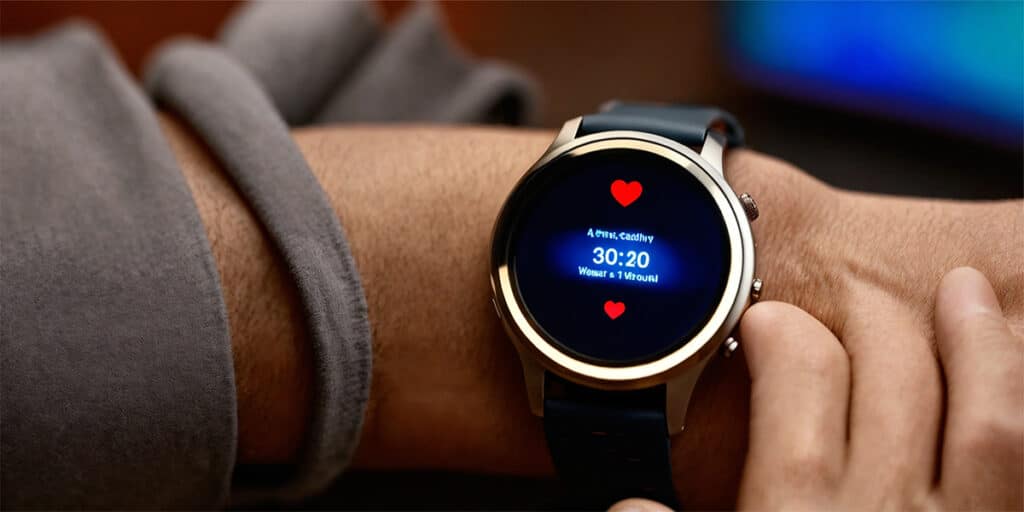The management of high blood sugar is a cornerstone in the care of diabetes, a condition that affects millions worldwide. Traditional methods of monitoring glucose levels have often been invasive and sporadic, leaving gaps in data that are crucial for effective management. Enter Continuous Glucose Monitors (CGMs), a technological breakthrough that promises a new era of precision in diabetes care.
These wearable devices offer real-time insights into glucose levels, allowing for an unprecedented level of control and personalization in diabetes management.
The Evolution of Glucose Monitoring
Glucose monitoring has come a long way from the days of finger-prick tests. Continuous Glucose Monitors (CGMs) represent the latest in diabetes technology, providing continuous, dynamic glucose readings without the need for constant manual testing. This shift not only enhances convenience but also opens up new possibilities for understanding and managing diabetes. With CGMs, individuals can see the immediate impact of food, exercise, and medication on their glucose levels, empowering them with the information needed to make informed decisions about their health.
Benefits of Continuous Glucose Monitoring
CGMs offer a myriad of benefits that transform diabetes management:
Enhanced Glucose Control: CGMs provide detailed data on glucose trends, helping to prevent both hyperglycemia and hypoglycemia.
Real-time Feedback: Immediate insights into glucose levels allow for swift adjustments to diet, activity, or medication.
Improved Quality of Life: The convenience and precision of CGMs reduce the burden of diabetes management, improving overall well-being.
Data-driven Decisions: The wealth of data collected by CGMs enables personalized diabetes care tailored to individual needs and responses.
CGMs and Lifestyle Management
Continuous Glucose Monitors (CGMs) revolutionize diabetes care not just through medication adjustments but by profoundly influencing lifestyle management. This advanced technology provides a window into the body’s glucose dynamics, offering real-time feedback on how various lifestyle factors—diet, physical activity, and daily routines—impact glucose levels. This feedback empowers individuals with diabetes to make informed decisions that align with their management goals, fostering a proactive approach to their health.
Diet plays a critical role in managing diabetes, and CGMs serve as an invaluable tool in understanding how different foods affect blood sugar levels. By monitoring glucose responses to specific meals or snacks, individuals can identify foods that cause significant spikes or drops in their glucose levels. This insight allows for dietary adjustments that can stabilize blood sugar, such as incorporating more low-glycemic foods that have a lesser impact on glucose levels. Moreover, CGMs can help fine-tune meal timing and portion sizes, further customizing dietary strategies to individual needs.
Exercise is another cornerstone of diabetes management, with its well-documented benefits on glucose control and overall health. CGMs offer a unique perspective on how physical activity affects glucose levels, revealing patterns that may not be apparent without continuous monitoring. For instance, some individuals may experience a drop in glucose levels during or after exercise, necessitating adjustments in their pre-workout meal or insulin dosing to prevent hypoglycemia. Conversely, others might notice a temporary rise in glucose levels after certain types of exercise, informing their post-activity management strategies. By understanding these patterns, individuals can tailor their exercise regimens to optimize glucose control and avoid extremes.
| Aspect | Benefit | Impact on Diabetes Management |
|---|---|---|
| Glucose Control | Real-time monitoring | Improves glycemic control and reduces episodes of hypo- and hyperglycemia. |
| Quality of Life | Decreased need for finger-pricking | Enhances comfort and convenience, leading to better compliance and satisfaction. |
| Lifestyle Adjustments | Insights into glucose variability | Facilitates more informed dietary and exercise decisions. |
| Medication Dosing | Accurate glucose trends | Enables precise insulin dosing and reduces risk of dosing errors. |
| Long-term Health Outcomes | Consistent glucose monitoring | May lead to improved HbA1c levels and reduced long-term complications. |
Integrating CGMs into Diabetes Care
Integrating Continuous Glucose Monitors (CGMs) into diabetes care marks a significant advancement in managing this chronic condition, offering individuals the ability to monitor their glucose levels continuously without the constant need for traditional blood glucose testing. The successful adoption of CGMs into a diabetes care plan, however, requires a multifaceted approach that encompasses education, understanding, and collaboration between patients and healthcare providers.
The first step in this integration process is ensuring that both patients and healthcare professionals have a thorough understanding of the CGM’s functionality. This includes knowledge of how the device works, from its sensor insertion and calibration to the interpretation of the data it provides. Familiarity with the CGM’s features, such as trend arrows that indicate the direction and rate of glucose changes, is essential for making informed decisions about daily diabetes management.
Equally important is the ability to interpret CGM data accurately. CGMs offer a wealth of information beyond simple glucose readings, including patterns and trends over time that can illuminate the effects of meals, physical activity, and medication on glucose levels. Patients and healthcare providers must work together to understand these data points within the context of the individual’s lifestyle, health goals, and treatment plan. This understanding can help identify areas for adjustment, such as changes in diet or insulin dosing, to better manage glucose levels and minimize the risk of hypo- and hyperglycemia.
Education plays a critical role in the integration of CGMs into diabetes care. Patients should be provided with comprehensive training on using their CGM, including how to apply and maintain the sensor, how to access and interpret the data, and how to troubleshoot common issues. Additionally, patients should be educated on the implications of their CGM readings and how to respond appropriately to different glucose levels.
Fostering a collaborative approach to care is another cornerstone of successful CGM integration. This involves open communication and shared decision-making between patients and healthcare providers. By leveraging CGM data, healthcare teams can offer personalized advice and adjust treatment plans in real-time, ensuring that diabetes management strategies are tailored to the individual’s unique needs and lifestyle. Regular check-ins and data reviews can help maintain this collaborative relationship, allowing for ongoing optimization of the diabetes care plan.
Ultimately, the integration of CGMs into diabetes care offers a promising avenue for enhancing diabetes management. By combining technological innovation with patient education and a collaborative care approach, CGMs can empower individuals with diabetes to take control of their condition, improve their quality of life, and achieve better health outcomes.
CGMs Redefining High Blood Sugar Management: Your FAQs Answered
What is a CGM, and how does it work?
A CGM is a device that continuously monitors glucose levels through a sensor placed under the skin, providing real-time data on glucose trends.
Who can benefit from using a CGM?
Anyone with diabetes, particularly those requiring tight glucose control, can benefit from the insights provided by a CGM.
Are CGMs painful to wear?
CGMs are designed for comfort, with most users reporting minimal discomfort upon insertion and during wear.
How accurate are CGM devices?
Modern CGMs are highly accurate, with advancements in technology continually improving their precision.
Can CGMs replace finger-prick tests?
While CGMs significantly reduce the need for finger-prick tests, occasional calibration may still be required.
How can I access a CGM?
CGMs are typically prescribed by healthcare providers, with coverage varying by insurance plans.
What is the impact of CGMs on diabetes management?
CGMs offer a comprehensive view of glucose trends, greatly enhancing the ability to manage diabetes effectively.
How do I interpret the data from my CGM?
Education on reading and interpreting CGM data is crucial, often provided by healthcare professionals or the CGM manufacturer.
Can using a CGM improve my HbA1c levels?
Many users report improved HbA1c levels due to the enhanced glucose control facilitated by CGM use.
What should I do if my CGM alerts me to high or low sugar levels?
Follow your diabetes care plan’s guidelines for addressing hyperglycemia or hypoglycemia, and consult your healthcare provider for personalized advice.
Citations
- Beck, R. W., Riddlesworth, T., Ruedy, K., Ahmann, A., Haller, S., Kruger, D., … & Dexcom Clarity Study Group. (2017). “Effect of continuous glucose monitoring on glycemic control in adults with type 1 diabetes using insulin injections: The DIAMOND randomized clinical trial.” JAMA, 317(4), 371-378.
- Pickup, J. C., & Sutton, A. J. (2008). “Severe hypoglycaemia and glycaemic control in Type 1 diabetes: Meta-analysis of multiple daily insulin injections compared with continuous subcutaneous insulin infusion.” Diabetic Medicine, 25(7), 765-774.
- Juvenile Diabetes Research Foundation Continuous Glucose Monitoring Study Group. (2008). “Continuous glucose monitoring and intensive treatment of type 1 diabetes.” New England Journal of Medicine, 359(14), 1464-1476.
- Klonoff, D. C., Buckingham, B., Christiansen, J. S., Montanya, E., Tamborlane, W. V., Vigersky, R. A., & Wolpert, H. (2013). “Continuous glucose monitoring: An Endocrine Society clinical practice guideline.” The Journal of Clinical Endocrinology & Metabolism, 98(10), 4239-4248.
- Battelino, T., Conget, I., Olsen, B., Schütz-Fuhrmann, I., Hommel, E., Hoogma, R., … & DeVries, J. H. (2012). “The use and efficacy of continuous glucose monitoring in type 1 diabetes treated with insulin pump therapy: a randomised controlled trial.” Diabetologia, 55(12), 3155-3162.








